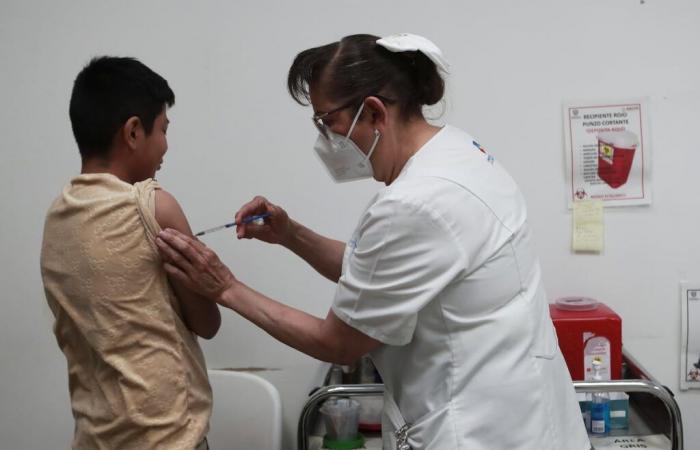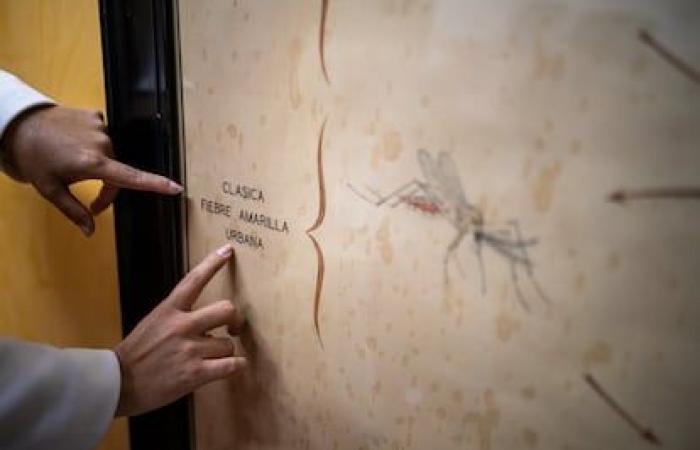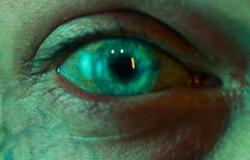The country offers in the open America section for its daily and global informative contribution to sustainable development. If you want to support our journalism, subscribe here.
No one has spread smallpox again in Latin America since 1971. The region was the third, after the United States and Europe, and the first of the global southern to eliminate the disease, that the world Health Organization (WHO) considered globally eradicated a decade later. America was also the first continent that eliminated the polio in 1994: before that, some 6,000 children were paralyzed every year because of the disease.
Thirty years later, a region known for its titanic vaccination campaigns is besieged by news of disease reemergence. Diseases that can be controlled through immunization. In figures from the Pan American Health Organization (PAHO), this 2025 2,318 measles cases have been recorded, 98% in the United States, Canada and Mexico, eleven times more than last year. The same entity also warns of 189 cases of yellow fever, of which 74 were fatal, in Bolivia, Brazil, Colombia and Peru. In Mexico, the authorities announced 809 cases of people’s cough so far this year, with 48 deaths, and in Colombia, 242, most of children under 5 years.
“They are different situations,” explains infectologist Carlos Eduardo Pérez, from the National University of Colombia. In the case of yellow fever, “there was a decrease in vaccination rates and monitoring was reduced, with the appearance of a single case, all containment channels must be activated.” “With the Raine cough, it is loss of vaccination in adult and migrant populations,” he adds. And, with respect to measles, the doctor remembers that it is an evil that mostly affects Mexico and the United States “related to erroneous information” about the disease vaccine: in 1998, a study was published that supported the hypothesis that the measles vaccine caused autism, something that has already been denied right, but that deeply fell into some places until today. In retrospect, it is an example that misinformation around health also existed without social networks.
But, although yellow fever, people’s cough and measles have different epidemiological contexts, they have a common thing: the rates of a vaccination that would help contain them are not enough. Again, in PAHO figures, only 16% of the countries of the American continent reach the recommended coverage to avoid measles outbreaks (95% of the vaccinated population with two doses). The regional average is 87% coverage for the first injection and 76% for the second.
“during the last five decades, vaccines have saved 154 million lives in the world and reduced infant mortality by 41% in the Americas,” the PAHO director, Jarbas Barbosa, recalled at a press conference. “Our progress against preventable vaccination diseases requires a firm and sustained commitment.”
This commitment has two sides: that vaccines are available and that people want to get vaccinated. “There is a problem of supply and access to vaccines,” Pérez recalls. “Investment in vaccination is necessary,” as “multinational efforts to acquire vaccines at affordable prices.” For example, the PAHO has its rotary fund, which helps buy these drugs more advantageously than if each country negotiated by its side. “Without the fund, countries would pay at least 75% more for the 13 most common vaccines in the region,” recalls Barbosa.
THE CHALLENGE: Recover confidence in vaccines
But the other face of the currency is the trust in immunization. And it is a field where a battle is fought from the COVID-19. “It was very clear during the pandemic how important vaccines are to respond to a public health emergency,” recalls the PAHO director. And, despite that, “the rumors that circulated” on the harmful effects of the drugs “were disastrous.” Pérez says that “speeches that link vaccination with damage greatly affect trust.” “With COVID-19 it happened, and more related to ideology than with scientific evidence.”
Most of these speeches came – and continue to come – from the extreme right, from the “rainfall” of which the Brazilian Jair Bolsonaro spoke, to the hydroxycloroquine who claimed to take Donald Trump to be the infection, without being demonstrated his effectiveness, echoing the misinformation that extended in social networks and public discourses. Alfredo Morabia, Professor of Epidemiology at the Universities of Columbia and New York City and editor in chief of the American Journal of Public Health (AJPH), has a overwhelming explanation: “They attack public health because public health is its enemy.”

“Public health cannot work if it does not reach everyone,” says Morabia, “has to be universal.” And that “is not compatible with the speeches (…) that they want to divide the population,” says the expert at a time when the freezing of the US Foreign Aid Funds, USAID, has put in check the advances in the struggle of some diseases in Africa. “We are vaccinated to Americans, but no Americans don’t work. The epidemic will continue.” For the epidemiologist, “that’s the root of everything.”
However, Morabia has a dose of optimism. “I see data that indicate that the population, mostly, wants to be protected by public health,” he says. Instead, anti -Vacunas “are a minority (…) that is very vociferous”, but a minority after all. The expert recalls, for example, that the coverage of vaccination against COVID-19 in over 65 years, the main risk group, in the United States reached 95%. “It is a success that exceeds all expectations. People voted with their arms, we don’t have to speculate,”.
This “vociferous” minority, however, is key. Measles, for example, is a much more contagious disease than COVID-19, and high vaccination rates are essential to avoid outbreaks. A study by Stanford University, Baylor College of Medicine, Rice University and Texas A&M University, published on April 24 in the Journal of the American Medical Association (JAMA)he drew different models to predict what could happen in the United States at different levels of vaccination coverage. “If vaccination rates remain the same (for 25 years), the model predicts that measles can become endemic to about 20 years,” he concluded.
To counteract the anti -vaccine speeches, Barbosa, of the PAHO, asked governments “communication strategies to translate scientific data” to the general public. “More and more people need more information, and need transparent information,” he added. “We do not have to argue with the misinformation of the anti -Vacunas, it is not worth it,” says Morabia, “but we have to have a positive speech explaining that vaccines are useful, they have changed the world and today they are essential to save our children.”
The epidemiologist acknowledges that we are in a period of “post epidemic tiredness” in which people do not want to hear to talk about immunization and masks. “It is normal, it is a transition towards a new period.” A new period in which the region does not forget the decades of illness and mortality from diseases that, currently, can be prevented. “Do you know that in 1900 you would have lost half of your brothers and sisters in their first years of life? Today, almost all the children with whom we grow live, and it is largely because of vaccines,” concludes Morabia.







